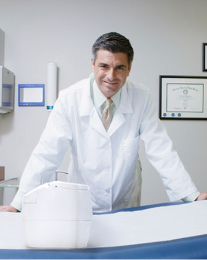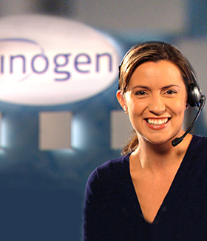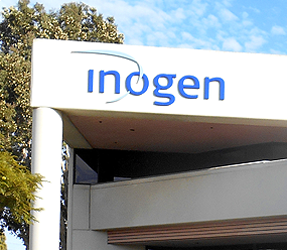What Is the Respiratory System? How Does It Work?
Many of us take the respiratory system for granted, counting on our lungs to do the vital work of oxygenating our entire body. However, if you stop to think about how the oxygen gets from your lungs into your bloodstream, you might find yourself thinking, “How does the respiratory system work?” Understanding what is the function of the respiratory system and what to do if it is not functioning properly is an essential part of taking good care of yourself. Read on to learn more about your pulmonary system, respiratory system organs and proper respiratory system function.
Understanding Respiratory System Function
Every cell in your body needs oxygen to live. The air we breathe contains oxygen and other gases. Your respiratory system is the network of organs and tissues that help you breathe. This system helps your body absorb oxygen from the air so your organs can work. It also cleans waste gases, such as carbon dioxide, from your blood. We are all born with the same respiratory system organs and each of the respiratory system parts function the same way within the pulmonary system when each part is healthy. Unfortunately, some of us end up needing a little help with our respiratory function for a variety of reasons. Common problems include allergies, diseases or infections.
The respiratory system includes your airways, lungs and blood vessels. The muscles that power your lungs are also part of the respiratory system. These parts work together to move oxygen throughout the body and clean out waste gases like carbon dioxide. [1]
The Parts of the Respiratory System and How They Work
Each of the respiratory system parts plays a vital role in delivering oxygen to your blood and helping rid your body of carbon dioxide. As long as each of those respiratory system parts are healthy, your respiratory system organs work together to make your respiratory system function properly.
Let’s take a look at the parts of the respiratory system to help us understand how the respiratory system organs work and how the parts of the lungs work, as well as how the lungs and airways work together. Then we can understand the different kinds of diseases that affect the respiratory system, and how they affect the different respiratory system parts and why that can cause problems for us down the road
Your airways deliver air to your lungs. Your airways are a complicated system that includes your: [1]
- Mouth and nose: Openings that pull air from outside your body into your respiratory system.
- Sinuses: Hollow areas between the bones in your head that help regulate the temperature and humidity of the air you inhale.
- Pharynx (throat): Tube that delivers air from your mouth and nose to the trachea (windpipe).
- Trachea: Passage connecting your throat and lungs.
- Bronchial tubes: Tubes at the bottom of your windpipe that connect into each lung.
- Lungs: Two organs that remove oxygen from the air and pass it into your blood.
From your lungs, your bloodstream delivers oxygen to all your organs and other tissues.
Muscles and bones help move the air you inhale into and out of your lungs. Some of the bones and muscles in the respiratory system include your:
- Diaphragm:Muscle that helps your lungs pull in air and push it out.
- Ribs:Bones that surround and protect your lungs and heart.
When you breathe out, your blood carries carbon dioxide and other waste out of the body. Other components that work with the lungs and blood vessels include:
- Alveoli: Tiny air sacs in the lungs where the exchange of oxygen and carbon dioxide takes place.
- Bronchioles: Small branches of the bronchial tubes that lead to the alveoli.
- Capillaries: Blood vessels in the alveoli walls that move oxygen and carbon dioxide.
- Lung lobes: Sections of the lungs — three lobes in the right lung and two in the left lung.
- Pleura: Thin sacs that surround each lung lobe and separate your lungs from the chest wall.
Some of the other components of your respiratory system include:
- Cilia: Tiny hairs that move in a wave-like motion to filter dust and other irritants out of your airways.
- Epiglottis:Tissue flap at the entrance to the trachea that closes when you swallow to keep food and liquids out of your airway.
- Larynx (voice box):Hollow organ that allows you to talk and make sounds when air moves in and out.
How Does the Respiratory System Work with Your Body?
The respiratory system has many functions. Besides helping you inhale (breathe in) and exhale (breathe out), your respiratory system connects to and interacts with every other part of your body. It: [1]
- Allows you to talk and to smell.
- Warms air to match your body temperature and moisturizes it to the humidity level your body needs.
- Delivers oxygen to the cells in your body.
- Removes waste gases, including carbon dioxide, from the body when you exhale.
- Protects your airways from harmful substances and irritants.
Without a functioning respiratory system oxygenating the body, all other systems begin to fail immediately.
Respiratory System Facts
In order to fully grasp the importance of respiratory system function, here are a few respiratory system facts that may surprise you. [2]
Your lungs have a huge amount of surface area. If opened up and laid flat, an adult lung would be about the size of a tennis court.
Your lungs are different sizes. The right lung is larger than the left lung in order to accommodate your heart. When the alveoli are filled with air, your lungs are the only organs in your body that can float.
People breathe an average of 13 pints of air each minute.
Women and children have a higher breathing rate than men.
About 70% of waste is eliminated through your lungs by simply breathing.
You exhale up to 17.5 milliliters of water each hour.
While oxygen is essential to the health of our cells, the air we breathe contains just 21% oxygen, and healthy bodies use only about 5% of that, the rest is exhaled.
Some air never leaves your lungs. That air keeps your alveoli and smaller airways open enough to allow the next breath to come more easily. Residual volume is one of several factors that doctors measure during pulmonary function testing to determine how well the lungs are functioning. [3]
What Conditions Affect the Respiratory System?
Many conditions can affect the organs and tissues that make up the respiratory system. Some develop due to irritants you breathe in from the air, including viruses or bacteria that cause infection. Others occur as a result of disease or getting older.
Conditions that can cause inflammation (swelling, irritation and pain) or otherwise affect the respiratory system include: [1]
- Allergies:Inhaling proteins, such as dust, mold, and pollen, can cause respiratory allergies in some people. These proteins can cause inflammation in your airways.
- Asthma:A chronic (long-term) disorder, asthma causes inflammation in the airways that can make breathing difficult.
- Infection: Infections can lead to pneumonia(inflammation of the lungs) or bronchitis (inflammation of the bronchial tubes). Common respiratory infections include the flu (influenza) or a cold.
- Disease: Respiratory disorders include lung cancer and chronic obstructive pulmonary disease (COPD). These illnesses can harm the respiratory system’s ability to deliver oxygen throughout the body and filter out waste gases.
- Aging: Lung capacity decreases as you get older.
- Damage:Damage to the respiratory system can cause breathing problems.
If you or a loved one have a chronic lung disorder, your doctor may prescribe a number of different therapy options to help you breathe better and get the oxygen you need. If your doctor prescribes oxygen therapy, you may benefit from using a portable oxygen concentrator such as the Inogen One to help improve your respiratory function as much as possible without limiting your daily life.
Respiratory Function and Inogen
If you are living with a chronic lung condition like COPD, and your respiratory system isn’t working the way it should, Inogen can help. The Inogen One portable oxygen concentrator system is designed for portable and stationary oxygen therapy. For most people with COPD and other chronic lung disorders, the breathlessness and other physical symptoms cause a significant impact on daily activities. In the past, oxygen therapy meant being tethered to an oxygen tank or stationary concentrator, requiring that you stay in one place or carry heavy tanks that need to be refilled regularly. Inogen One has is designed to help you maintain your on the go lifestyle while on oxygen therapy.
With Inogen One, you get your oxygen all day, every day with a portable system that requires no refills or heavy tanks, as long as you are connected to a battery or AC power source. This small system pulls oxygen continuously from the atmosphere even while traveling in its specially designed pack or on wheels. The Inogen One portable oxygen concentrators are powered by rechargeable battery or any AC or DC power source, so you can use it at home or on the go.
Living with COPD and other chronic lung conditions requires some adjustments, but it should not mean missing out on your life. Inogen One portable oxygen concentrators provide peace of mind and mobility while still receiving the benefits of your oxygen therapy. Talk to your doctor and get the respiratory system facts about your lung disorder to learn how an Inogen One System can help you today. Contact us for more information.
Frequently Asked Questions
What are the five main functions of the respiratory system?
Your respiratory system performs five main functions to keep your body healthy and working properly. While some may seem obvious, others may not have occurred to you. [4]
- Pulmonary ventilation, also known as Inhaling and exhaling air is the most obvious and most important function of the respiratory system. During this process, air is warmed and achieves the proper humidity level, and it is also filtered to remove harmful irritants
- The gas exchange between the lungs and the bloodstream allows oxygen to enter your capillaries from your lungs and carbon dioxide to leave your capillaries via your lungs.
- The delivery of gasses to and from your Your red bloodstream carries oxygenated blood throughout the body to your tissues, while carbon dioxide leaves your tissues, entering your bloodstream to be carried to the lungs.
- Vibrating your vocal cords so that you are able to
- Working with your nervous system to make the process of olfaction (or smelling)
What is the main function of the respiratory system?
The primary respiratory system function is to take in oxygen and expel carbon dioxide. This occurs through the breathing process, when red blood cells collect the oxygen we have breathed in through the lungs and carry it throughout our bodies, while red blood cells also collect carbon dioxide and bring it back to our lungs where it can be exhaled. [1]
What happens when you breathe?
How does the respiratory system work to make you breathe? Every time you breathe in air, your diaphragm tightens, moving downward to make space in your chest. Your lungs expand, pulling air in through your nose and/or mouth. That air then moves down your trachea, through your bronchi and into the bronchioles, where it enters your alveoli. Oxygen passes from the alveoli to the hemoglobin in the surrounding capillaries, while carbon dioxide passes from the capillaries into the alveoli. The carbon dioxide is exhaled when your diaphragm relaxes and moves upward into the chest cavity, forcing the air out of your lungs. The oxygen-rich blood in your capillaries is carried to the pulmonary vein, where it travels to the left side of the heart and is then pumped throughout the rest of the body. [5]
Where does gas exchange occur in the lungs?
How does the respiratory system work to get oxygen into the body and carbon dioxide out of the body? The exchange of gases in the lungs takes place between the alveoli and capillaries. The capillaries and alveoli share a membrane through which oxygen can pass from the alveoli into the capillaries and carbon dioxide can pass from the capillaries into the alveoli. This gas exchange creates oxygenated blood, which is then circulated throughout the body via the bloodstream, while tissues are able to expel carbon dioxide to be carried via the bloodstream back to the lungs to be exhaled. [6]
Is the heart part of the respiratory system?
The heart is not part of the respiratory system, though it does play a key role in working with the respiratory system. The heart is actually the most important player in the circulatory system, helping to pump blood throughout the body. So, how does the respiratory system work with the heart? The circulatory system works very closely with the respiratory system, helping to bring oxygenated blood to every part of the body. Without the heart, the oxygen needed by each of your cells would not be delivered, and the waste carbon dioxide created by the body’s processes would not be delivered to the lungs where it can be exhaled .[8] So, while the heart is not a part of the respiratory system, it is essential to helping the respiratory system work correctly.
How do chronic lung diseases affect the respiratory system organs?
Chronic disease in the pulmonary system can cause irritation, inflammation and permanent damage in the respiratory system parts. These diseases are lasting and progressive, causing difficulty breathing. While chronic lung diseases like asthma and chronic bronchitis begin as irritation and inflammation in the airways, they can eventually cause permanent damage. Chronic lung diseases like COPD and lung cancer, on the other hand, tend to progress faster and always result in damage to the lungs.[7]
References
- “Respiratory System: Functions, Facts, Organs & ” Cleveland Clinic, Cleveland Clinic, 24 Jan. 2020, Respiratory System: Functions, Facts, Organs & Anatomy (clevelandclinic.org)
- Ribeiro, “8 Fun Facts About Lungs.” Pulmonary Hypertension News, BioNews Services, LLC, 7 Sept. 2018, pulmonaryhypertensionnews.com/2017/12/20/8-fun-facts-lungs/.
- What Is Residual Volume? (com)
- “5 Functions of Respiratory System: Respiratory ” Visible Body, Visible Body, Accessed 5 July 2020, www.visiblebody.com/learn/respiratory/5-functions-of-respiratory-system.
- How Lungs Work | American Lung Association
- Martin, Laura “Gas Exchange .” MedlinePlus, U.S. National Library of Medicine, 12 July 2018, medlineplus.gov/ency/anatomyvideos/000059.htm.
- COPD – Symptoms and causes – Mayo Clinic
- Anatomy and Physiology: The Relationships of the Respiratory System (visiblebody.com)
Additional Sources
- Castro, “Gasp! 11 Surprising Facts About the Respiratory System.” LiveScience, Future US Inc., 14 Mar. 2014, www.livescience.com/44105-respiratory-system-surprising-facts.html.
- “How Inhaled Carbon Dioxide Affects the Body – Fact ” Renewable Fuels Association, Renewable Fuels Association,2016.
- “How the Lungs Work.” National Heart Lung and Blood Institute, U.S. Department of Health and Human Services, 24 Sept. 2019, nhlbi.nih.gov/health-topics/how-lungs-work and How the Lungs Work – The Respiratory System | NHLBI, NIH https://www.nhlbi.nih.gov/health/lungs/respiratory-system.
- “Respiratory Failure.” National Heart Lung and Blood Institute, U.S. Department of Health and Human Services, Accessed 5 July 2020, nhlbi.nih.gov/health-topics/respiratory-failure.
- Smith, “Anatomy and Physiology: The Relationships of the Respiratory System.” Visible Body 3d Human Anatomy, 16 Nov. 2012, www.visiblebody.com/blog/anatomy-and-physiology-the-relationships-of-the-respiratory- system.
- Toro, “Diagram of the Human Respiratory System (Infographic).” LiveScience, Future US Inc., 29 Aug. 2013, www.livescience.com/26825-human-body-system-respiration-infographic.html.
- Zimmermann, Kim “Respiratory System: Our Avenue for Gas Exchange.” LiveScience, Future US Inc., 23 Aug. 2019, www.livescience.com/22616-respiratory-system.html.
- The Respiratory System Does More than Move Air into and out of Your ” Visible Body, Human Anatomy Atlas, Sept. 2016, The Respiratory oysconmelibrary01.files.wordpress.com/2016/09/atlas-respiratory-system1.pdf.












